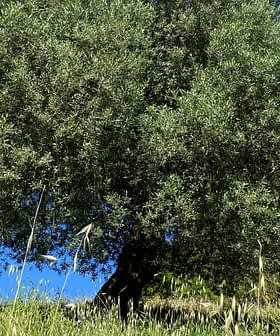
Research carried out by the University of Jaén and presented at the recent Bioptima conference has highlighted the great promise of olive tree biomass in the generation of ethanol as a bio-fuel, as well as other potentially useful products.
The research, headed by Dr. Eulogio Castro, has spanned several years, beginning with the first demonstration of the production of ethanol from olive tree residue. Subsequent projects have expanded to the concept of a bio-refinery based on this biomass. Ethanol is an important bio-fuel, already added to fuel supplies in Spain and around the world, and a viable partial replacement to fossil fuels. Its production is thus an area of great interest and substantial research on the subject is being funded around the world.
The process of producing ethanol from olive tree biomass is a simple process made up of four main steps. The tree is composed of a number of compounds, of which sugars in the form of cellulose and hemicellulose are the most important. These sugars are held together by a compound called lignin. The first step of the process involves the degradation of this lignin ‘cement’, followed by the solubilisation of hemicellulose. Enzymatic hydrolysis then occurs, by which cellulose is attacked by enzymes and broken down into the simpler glucose units. This step is essential as only single sugar molecules can be converted to ethanol — it is not possible to covert cellulose directly. Fermentation of this glucose by yeast or other microorganisms to generate ethanol is then carried out. Finally, the ethanol is separated for use as a bio-fuel.
Dr. Castro stated that the use of olive tree biomass in this process had a huge advantage over other primary sources as it was a waste product produced in huge amounts annually (3 tons per hectare in the 2.4 million hectares of olive groves in Spain alone), with no industrial uses. In addition to this it is essential to remove this biomass from fields to prevent the spread of vegetal diseases. Currently tree waste is burned, so rather than spend money on disposing the waste, it makes sense to use it to convert the residue into a useful product.
Ethanol produced from olive tree biomass is termed as a second generation bio-fuel, as it is produced from a source that is not viable for other uses. This makes it preferable to those known as first generation, which are produced from raw material that have food or feed application, such as grains. It is therefore an ideal source from which to generate partial fossil fuel replacements. In addition to ethanol production, the generation of other useful products from olive tree biomass such as a compound exhibiting antioxidant capacity and oligo-saccharides, which could be used in the food and pharmaceutical industries respectively, have been demonstrated by Castro’s team.
Despite the advantages of this type of bio fuel production, there are several barriers still hindering further development. Dr. Castro explains that “in the specific case of olive biomass, which is obtained by pruning, logistics is one of the main concerns. A collection system is needed that can transport large amounts of biomass from fields to transformation plants, with economic efficiency.” He also said that the current technological issues being addressed involved improving yields in all steps of the process and that, as always, ongoing funding from public and private organizations were essential to continued research into this potential fuel source.
Sources:








